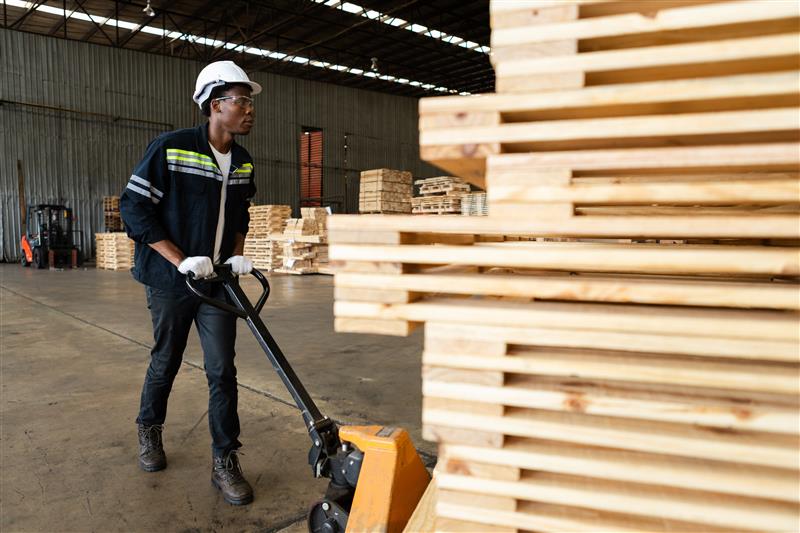Exporting can feel like such an overwhelming task – but it’s also a huge step if your small business is ready to start expanding into international markets, so congratulations! Sending your products overseas can seem daunting, specifically when you’re thinking about taxes, shipment methods, safety of your package, insurance and more. We understand that it can almost seem easier to just not explore this further, and remain in the Australian market only, but we can assure you – once you’ve done it a few times, it’s very easy to understand!
Top 10 tips for first-time exporters
At Export Pallets, we’ve worked with businesses of all sizes to get their goods safely and efficiently across borders into countless countries around the world. We are experts in our field and really do pride ourselves on offering advice that will get your products where they need to be, on time, and with limited stress. We have put together our top 10 tips for first-time exporters.
1. Do your market research
To consider exporting, it is assumed that you’ve already done your homework and know whether there is real demand for your product in the location you plan to export to. If not – then rewind and start here! Understand how your target market may differ in other countries, and their specific needs for your product to ensure exporting won’t be an expensive lesson. Know who your customers are, what regulations exist, and what competitors you’ll be up against in the country you’re exporting to. Knowing the market upfront will save you time and money down the track. There are market research companies that can assist you with this, or take a look at other brands you would consider your competition and see how and what they are doing in that market to differentiate and sell successfully.
2. Get your documentation in order
Exporting comes with its fair share of paperwork – unfortunately, this can’t be avoided! From commercial invoices and packing lists to certificates of origin, each country will have slightly different requirements. Missing a document can mean costly delays at customs – so work with suppliers who can help you out with some advice or tips to ensure you don’t get caught out. Don’t be afraid to ask your freight forwarder or customs broker too, to make sure you’ve ticked all the boxes and the process can go smoothly.
3. Understand export regulations
Different countries have different rules about what can and cannot be brought in. Some items require permits, some are restricted, and others may need special labelling or treatment – even our wooden pallets require specific heat treatment when leaving the country to comply! Australia also has its own set of export regulations you’ll need to follow.
4. Choose the right packaging
The way you prepare and pack your goods for shipping is just as important as the product itself. International shipping can be rough, so your packaging needs to protect against movement, moisture, and handling. Using export-quality pallets and strong, compliant packaging will help keep your shipment safe and ensure it arrives in the same condition it left. Plastic wrap needs to keep items stacked securely, bubble wrap or packing noodles inside smaller boxes to ensure products aren’t damaged in transit, and even corner protectors of products to ensure when they’re bumped, they’re not damaged or dented – All things to keep in mind.

5. Know your pallet requirements
Speaking of pallets, many countries have strict rules about what pallets you can use. For example, most countries require wooden pallets to be ISPM 15 compliant (heat-treated and stamped) to prevent pests from spreading or require specific sizes that work with their standard racking systems. When exporting, ensure that your supplier offers this heat treatment service and can provide you with certificates to facilitate smooth customs clearance. Using the wrong pallet can also see your goods being rejected at customs, so check with your supplier as to the best size to use for the receiving country. Always check the pallet requirements for your destination country before shipping.
6. Get the correct insurance
Even with the best planning, things can go wrong. Weather delays, damage in transit, or even lost cargo are all part of the exporting world. Cargo insurance is a relatively small investment that gives you peace of mind – and protection – if something unexpected happens.
7. Pick reliable partners to work with
To start you off on your exporting journey, it’s best to pick reliable suppliers with good reputations to help you understand the ins and outs of exporting, especially for your first time. Reliable Aussie pallet companies are always ready to offer advice and assistance to help you get your first shipment out the door and on its way.
8. Factor in costs (beyond shipping!)
It’s easy to underestimate the true cost of exporting and miss fees that can pop up along the way. Beyond freight charges, you’ll need to account for tariffs, customs fees, insurance, and potential storage costs if your shipment gets delayed. Factor all of these into your pricing to avoid nasty surprises when you finally get paid. While it may sound silly, don’t forget to factor in currency exchange rates if anyone is dealing in a different currency.
9. Communicate clearly with your buyers/end recipients
Miscommunication is one of the most common issues we see, with people unsure of when products will arrive. Be upfront with your international customers about timelines, Incoterms (who pays for what), and what’s included in your shipment. The clearer you make it, the less likely there is to be questions or issues when your products arrive in the end country!
10. Start small and build up
Finally, don’t feel like you have to ship massive volumes straight away. Start with a smaller order to test the waters. This way, you’ll learn the ropes, spot any issues in your process, and build confidence before scaling up. You’ll also get to test out your chosen suppliers and ensure you’re happy with how they work before committing to large orders.
Exporting internationally can seem overwhelming at first, but it doesn’t have to be! Our number one tip, is to partner with people who are happy to offer advice and support through the process. Join forums and speak with other business owners who are also a wealth of knowledge with good and bad experiences to share.






